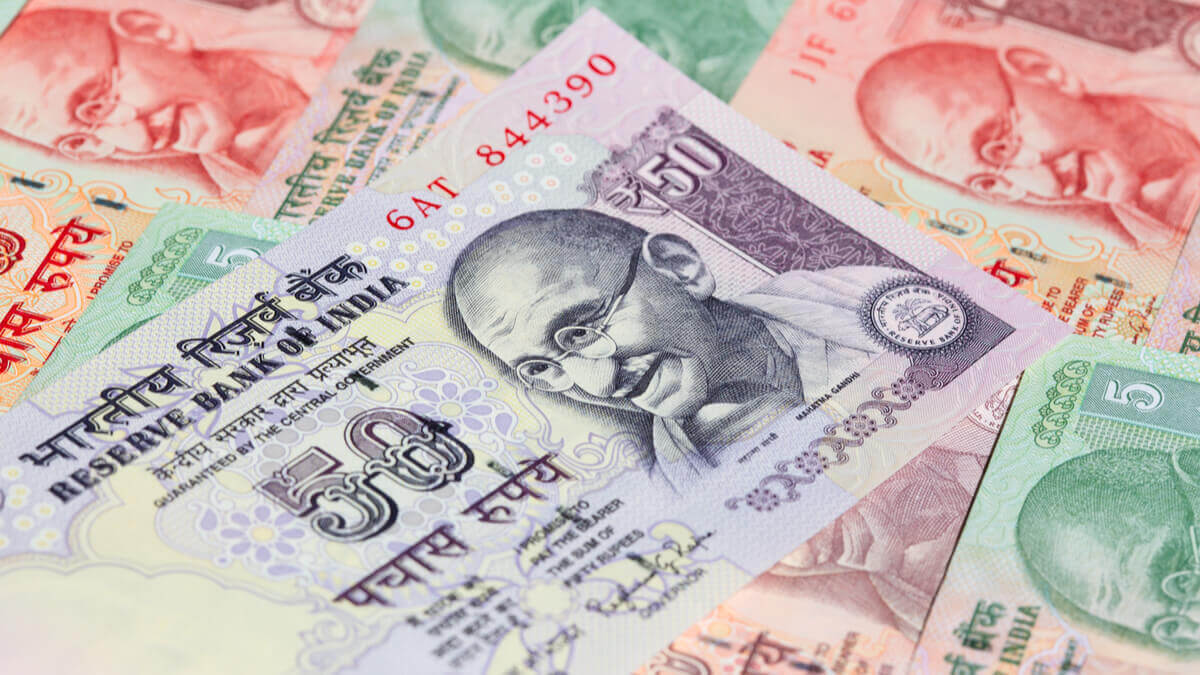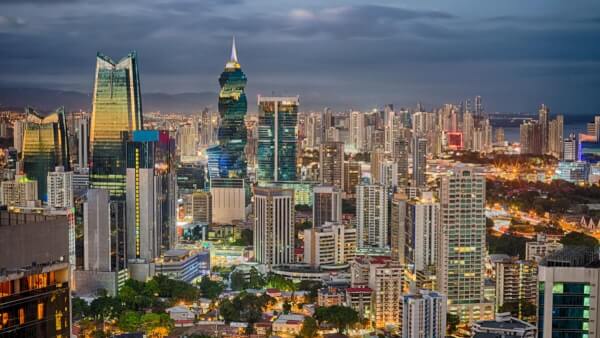American banks in Panama: branches and more
Read on to find out what US banks have branches in Panama and tips on banking in the country.

If you’re moving to India to work or study, or you’re a non-resident Indian, Overseas Citizen of India, or a Person of Indian Origin, you might be looking to get an account to hold and exchange rupees more conveniently.
Read on to find out how to open a bank account in India. Plus we’ll introduce Wise, a non-bank alternative with a multi-currency digital account you can open from the US, to hold, send, spend and exchange INR alongside USD and 40+ other currencies.
You can, but this is tricky. Non-resident accounts are only available to Non-Resident Indians (NRIs), Persons of Indian Origin (PIOs) and Overseas Citizens of India (OCIs).
If you don’t fall into any of these categories, you’ll need to be living in India before you can open an account. You can start with a ‘small’ account, but more on that later.
There are several different types of bank account you can open as an NRI, PIO or OCI, but the most common are¹:
|
|---|
Let’s have a look at each of them.
This is a traditional bank account in Indian rupees.
You can freely make deposits and withdrawals from the account, including international transfers. This makes it ideal if you’re looking for a place to keep your money safe without losing access to it during a short stay.
Many accounts also come with an Indian debit card you can use for ATM withdrawals and to make payments. And if your account bears interest, this will be exempt from Indian tax.
Like non-resident external accounts, this type of account is also a traditional bank account in Indian Rupees. However, there are a number of important differences.
An NRO is less flexible than an NRE, and is better suited for longer stays. There are limits to how much money you can transfer back to your home country out of this account, but it can be a useful place to deposit money you earn in India. Any interest will be taxed by the Indian government.
This type of account can only be opened in a foreign currency, so it isn’t particularly useful if you’re looking for an Indian account to use during your stay.
Unlike a traditional bank account, an FCNR is a fixed deposit which pays regular interest. This makes it better suited as an investment, rather than a working account for your day-to-day needs. You must keep the account open for at least 1 year, but not more than 5 years.
Which documents are acceptable will depend on whether you’re applying for a resident or non-resident account.
Whether you want to open an account as a resident, NRI, PIO, or OCI, you’ll need to provide proof of identity, address, and status.
| Usually this means providing: |
|---|
|
Extra documents are needed if you’re opening an account from overseas, and you’ll need to have any documents that aren't in English translated.
Generally as a resident you’ll need to provide proof of identity and address in India. This may be done with a passport and a recent utility bill showing your Indian address for example.
Some banks may also accept other documents as proof of address. These include a PAN card⁷, government correspondence, a letter from your embassy in India and even a municipal or property tax receipt. It’s entirely up to individual banks to decide whether to accept these documents, so you’ll need to confirm with your bank beforehand.
If you don’t have a document to prove your address one option is to open an account commonly called a small account, by providing a photo and signing it or putting your thumb impression on it in the presence of a bank official².
If the barrier to getting an INR account is an Indian proof of address, and you’re still in the US, consider opening a Wise account instead, for flexible account and card services across INR, USD and more. We’ll touch on Wise a bit more later.
If you want to open a resident bank account, you’ll need an Indian proof of address. This is very difficult, if not impossible to obtain unless you’re physically present in India.
On the other hand, applying for a non-resident bank account from abroad is very easy. In fact, you can do it without ever setting foot in India - as long as you hold a qualifying status, such as being a PIO or NRI.
In some cases, you can submit your application online, via the bank’s website. However, most of the time, you’ll need to download an application pack and fill it in by hand.
Depending on the bank, a customer representative may book a phone call with you to go over the application and ensure that you’ve filled it in correctly. You’ll also need to get your documents self-attested and notarised. You self-attest your documents simply by signing on every page.
After the application is complete, you’ll need to mail the documents over for processing. Very often, you’ll also need to make a minimum initial deposit. This can even be in your own currency, which will then be converted into rupees. Be careful though, as you may not always get the best exchange rate when you do this.
| Learn all about sending money from India to the US in our guide |
|---|
India is huge, and so is its banking system.
However, the four largest banks are State Bank of India, ICICI Bank, Punjab National Bank and Canara Bank. Unfortunately, most of them have fairly basic products with not too many perks.
Here’s what they each have to offer.
State Bank of India³ is by far the largest bank in India, with a huge network of branches and ATMs across the country. It’s also the country’s oldest bank. The bank offers both non-resident accounts and accounts for residents.
A resident current account can come with an ATM debit card and in some cases you can open it online. As a foreigner though you’ll likely have to visit a branch as you won’t have the standard paperwork expected for account opening.
ICICI Bank⁴ has a full suite of resident and non-resident accounts which in some cases include internet and mobile banking, a MasterCard debit card, options to earn reward points for paying your bills online, and lots of other perks.
As a large bank you’ll also find credit cards, loans, investment products and pretty much all you could need to manage your finances day to day and over the longer term.
Like the other major Indian banks, Punjab National Bank⁵ offers products for both residents and non-residents. Products for residents include a Current Deposit Account with an ATM debit card and free internet banking which you can open whether you’re an individual or a business customer.
You can also get loans for education, housing, vehicles and more, and a broad suite of other banking and financial services.
Besides basic accounts for non-residents, Canara Bank⁶ also offers investment and consultancy services for non-residents. If you’re a resident of India, Canara has a Current Account that’s suitable for individuals and businesses alike, plus easy access to end to end solutions to deposit and save, spend, borrow and invest.
Opening an Indian bank account can be complicated. Choose Wise instead, for a flexible and convenient account you can use to manage your money across INR, USD and 40+ other currencies.
Get a Wise Multi-Currency Card for convenient spending in 150+ countries, send payments to 160+ countries, and access the mid-market exchange rate with low fees from 0.43%⁷ every time you need to switch from one currency to another. You’ll also be able to access local bank details to have people send USD and several other major global currencies conveniently, direct to your Wise account.
Wise isn’t a bank - but it’s a registered Money Service Business in the US and regulated wherever services are offered around the world. That means it’s safe to use, and could save you money too.
Unfortunately, banking in India is quite expensive. There are a number of fees and charges you’ll have to look out for.
Most bank accounts in India aren’t free. You’ll need to pay a monthly account fee - called a maintenance fee. You’ll also often find you have to keep a minimum balance in your account, or risk a fee in the region of INR 500. Similarly, ATM debit cards aren’t always free - you may need to pay a one off or annual fee to have one issued with your account.
You might find that you get only a set number of free ATM transactions a month, after which you’ll incur a fee. It’s also helpful to know Indian banks don’t just charge you for making withdrawals.
You may also be charged for using an ATM in other ways, including requesting a mini statement or even just making a balance enquiry.
Making withdrawals from an ATM abroad is even more expensive. You can expect to pay approximately 100 INR per transaction, as well as other assorted service taxes and charges.
Many Indian banks will let you close your account free of charge during the first 14 days after opening.
However, expect to be charged an account closure fee once this period expires. Once you’ve had your account for a year or more, closure fees may be waived in future.
International money transfers, which most Indian banks call remittances, can be costly.
At the very least, you can expect to be charged a processing fee and a service tax, plus a foreign exchange fee which may be rolled up into the exchange rate used to send your payment.
Sending your payment with an alternative service like Wise can mean you pay a lower fee overall, with a more transparent exchange rate - and a fast⁹ delivery time too. Bear in mind that whether you use Wise or a bank, there are limits on the amount of money you can send overseas from India in many cases - double check you understand the rules before you get started.
Moving to India can be daunting, as you’ll likely be hit with a culture shock when you arrive. However, use this guide to open your bank account to help you with settling in and adjusting to your new home - and don’t forget you can use Wise to hold, exchange, send and spend INR even before you leave the US.
Sources checked 09.12.2023
*Please see terms of use and product availability for your region or visit Wise fees and pricing for the most up to date pricing and fee information.
This publication is provided for general information purposes and does not constitute legal, tax or other professional advice from Wise Payments Limited or its subsidiaries and its affiliates, and it is not intended as a substitute for obtaining advice from a financial advisor or any other professional.
We make no representations, warranties or guarantees, whether expressed or implied, that the content in the publication is accurate, complete or up to date.

Read on to find out what US banks have branches in Panama and tips on banking in the country.

Read on to find out what US banks have branches in Portugal and tips on banking in the country.

Read on to find out what US banks have branches in Italy and tips on banking in the country.

Read on to find out what US banks have branches in Germany and tips on banking in the country.

Find out what Remitly's global membership program, Remitly One, offers, and the fees and requirements to be aware of.

Read on to find out what US banks have branches in India and tips on banking in the country.